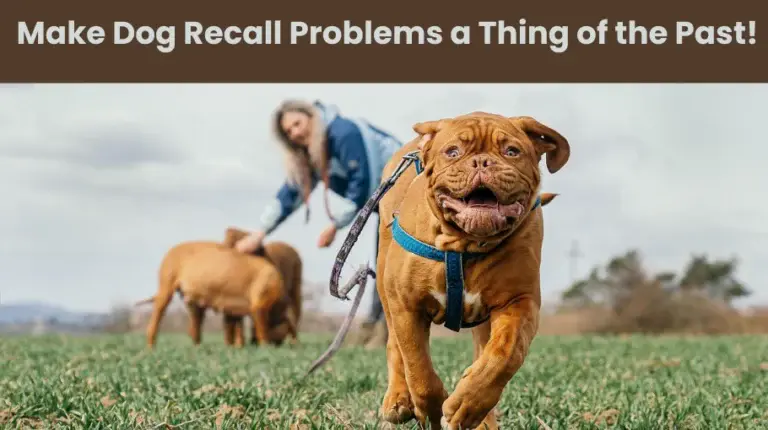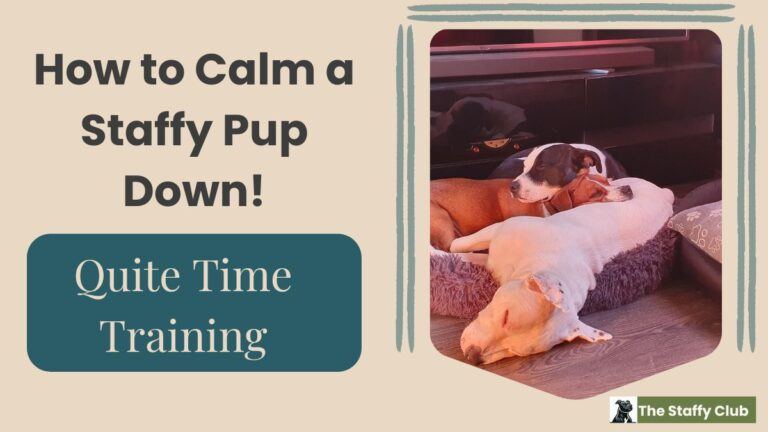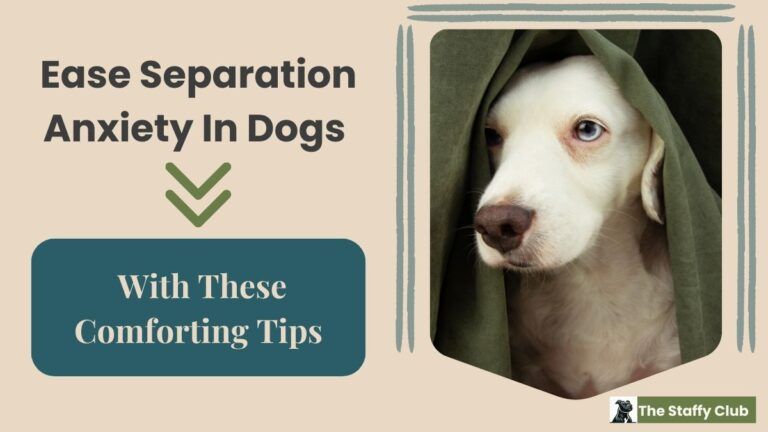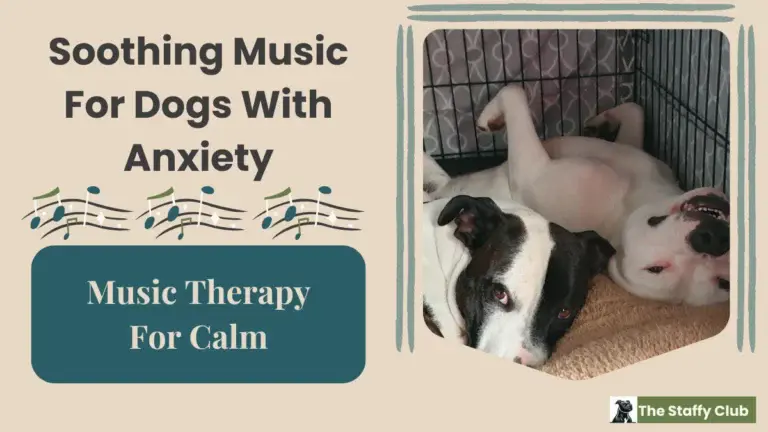The Best Treatment for Dogs With Anxiety
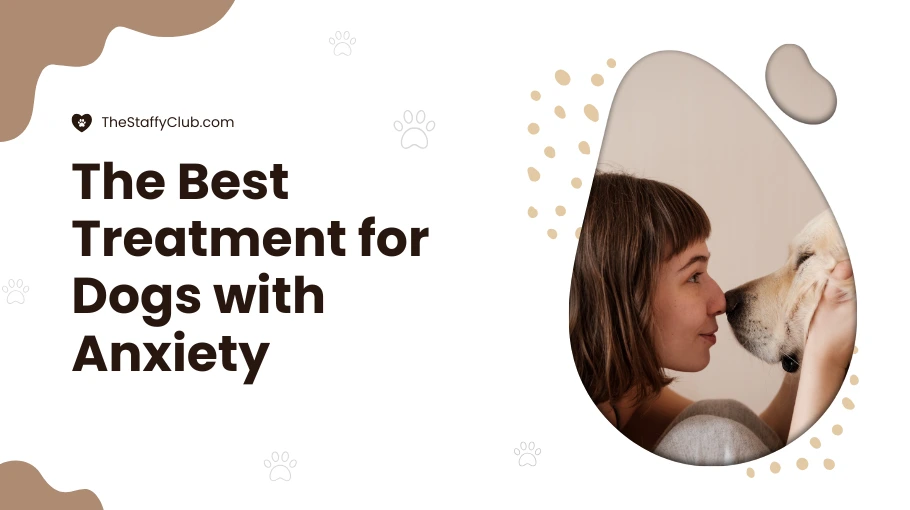
Every situation is different. I thought we had a dog with anxiety. Turns out, he just doesn’t like change. Nevertheless, I’ve been down the rabbit hole of looking up what the best treatment for dogs with anxiety is, and I can tell you, it starts with identifying the triggers. That’s because there’s different types of dog anxiety.
When you know the triggers, or if it’s all the time, you’ll be better able to put the right practices in place to help your dog… or know if you may need your vet to intervene, such as with things like arthritis, thyroid conditions, or any health condition that causes pain or discomfort. Some medical issues can cause a usually relaxed dog to become anxious.
Table of Contents
Assessing The Level of Anxiety in Dogs
You’ll know your dog best and can likely make a good judgment call on whether it’s really abnormal behavior, or just certain things that seem to make your dog nervous.
If you’d rather take a clinical approach, the Lincoln Canine Anxiety Scale (LCAS) can be used to assess the behavior of dogs with anxiety. It’s a 16 question assessment to analyze the behaviors shown in the table below.
(Clicking or tapping the image opens full view in a new tab)
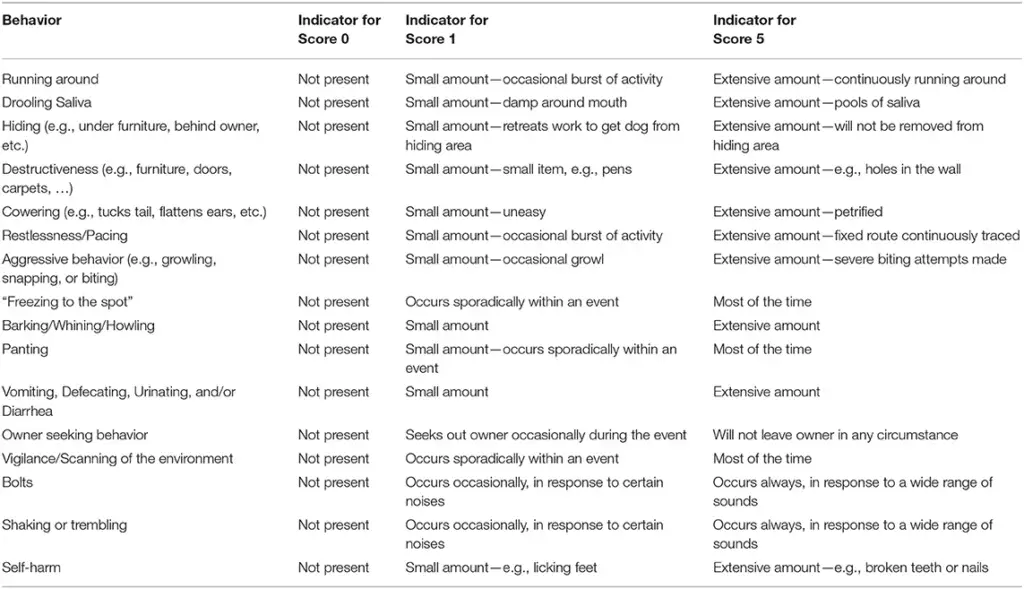
The original LCAS assessment can be ordered free of charge for personal use from the Lincoln IP Store.
Treatment Options for Dogs Showing Signs of Anxiety
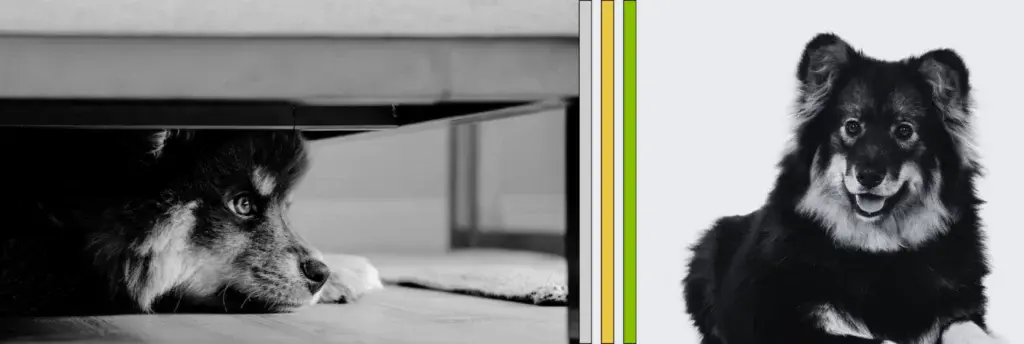
During my research I came across numerous methods, some of which are recommended by vets, others are things owners have tried, sometimes with success early on.
For us, the anxiousness one our dogs was experiencing was mild, meaning some pacing, whining and being more clingy than usual, or cowering at the back of the crate. I’m a firm believer in crate training because it creates a safe-space for them to turn to. Different crates serve different needs. The best dog crates for anxiety will depend on the dogs nature – like does it try to escape, bite on or paw at wire, or settle better with a crate cover to block distractions?
For dogs that are not in a constant or frequent state of nervousness, they’ll be responsive to behavior modification training, which is essentially what dog desensitization training is. Getting them used to environment changes. I find this to be the best treatment for dogs with situational anxiety or phobias that trigger the anxious behavior.
For a strategic approach to calming a nervous dog, I’d begin with one or more of the easiest and fastest ways listed in group 1 below, and if none worked, (or not enough), I’d move to the options in group 2. The last option is to get your vet involved, however, that depends on the extremity.
If you feel the anxiety levels are distressing the dog so much it’s affecting its quality of life, get your vets advice. With that in mind, below are what I consider to be the best approach to treat a dog with anxiety, but I’m not a vet so this is opinion only, from one dog owner to another, not professional advice! Use it to learn your options, and try things to see if they help relax your dog.
Group 1: For Dogs with Mild Symptoms of Anxiety
In this category, there’s 4 things you can try to help your dog settle in situations they’re uncomfortable with. The key to all of them is gradual acclimation.
For example, if you have increased exercise and the dog still struggles with crate training, try 5 to 10 minutes in the crate wearing an anxiety vest. It’s not something I’ve tried, but if gradual acclimation to the crate wasn’t showing results of the dog improving, I’d be more keen to try something like a ThunderShirt™ before resorting to nutritional supplements or seeing if the vet could prescribe something.
The 4 Things that Help to Calm Anxious Dogs
- Exercise
- An anxiety vest
- The dog massage aka, petting
- De-stressing toys
1. Exercise
A well exercised dog is more likely to be relaxed and content. The more high energy the breed, the more exercise they need. See the infographic below to see where your breed of dog sits in the level of exercise they need.
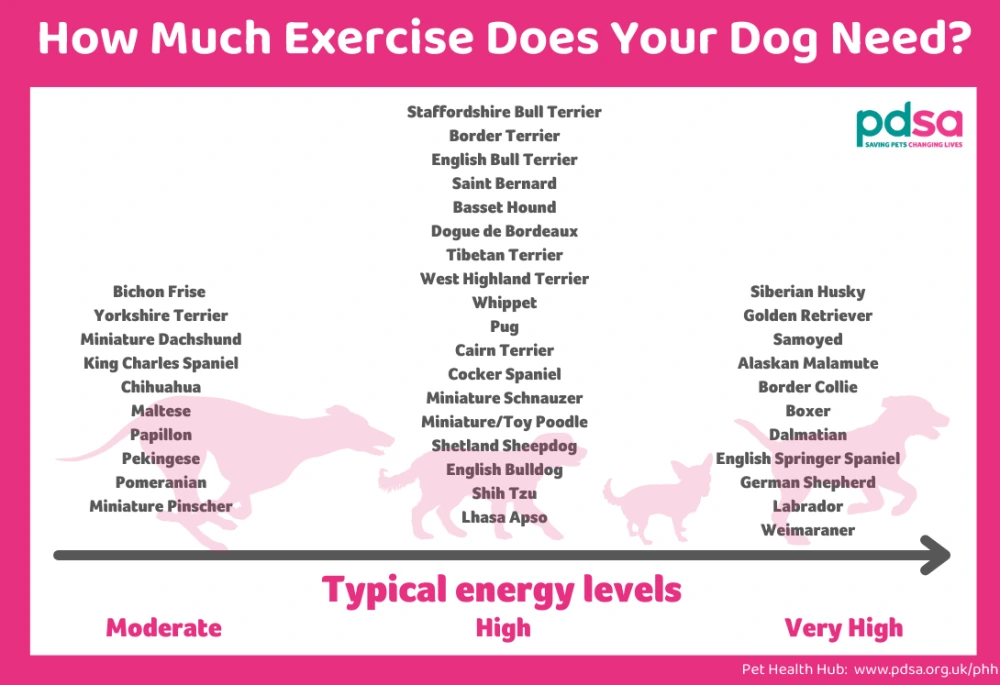
In general, it’s this per day:
- 30 minutes for small dogs
- 1 hour for adult dogs with moderate energy
- 2 hours for high-energy breeds
We have 2 Staffies and a decent sized garden they can run in, but in the winter, they’ll get additional indoor dog exercises, otherwise, they get too wild. When weather permits, they get longer walks, but too long could lead to leash reactivity – a type of situational anxiety. For more information on exercise duration, see my related article about how long to walk a dog?
I’d also add that the exercise is better to be split into however many walks you can manage.
To give you an example, when I was looking after a neighbors Shih-Tzu (tiny dog) while they were away on holiday, he was whining and barking frequently, just because he was on his own most of the day.
He got 2 x 15 minute walks per day, his usual after walk treats that he was used to getting, and company for an hour to two. He was settled by the third night left alone. What helped there was keeping to his regular routine.
2. Dog Anxiety Vest (e.g. ThunderShirt™)
I’ve heard of these, and looked into them to learn more about how it works, and its supposed effectiveness. They seem to me to be like the weighted blankets designed for people with anxiety.
Both use weight to apply a consistent pressure to the body, and that’s said to trigger the release of serotonin and oxytocin (both neurotransmitters) that reduce cortisol – the stress hormone. I can see the logic behind it.
Nevertheless, there isn’t much evidence that I could find to say if a ThunderShirt™ or dog anxiety vests are effective or not. Owner reviews suggest they can be effective, but reviews don’t tell the whole story, such as the living conditions, size of crate, the type of anxiety the dog experiences, or any other things being done to help reduce the dogs anxiety levels. Still, if the needs there, it’s worth a try.
3. Dog Massage
The simplest form of a dog massage is just petting them. Not in the scratching way, but more rhythmic. The areas to focus on with gentle rhythmic petting are these:
- The chest,
- Shoulders and upper back,
- The base of the neck,
- and either the rib cage, or the base of their tail/lower back.
Be cautious with the more sensitive areas like the belly, head, nose, paws, and tail. Some dogs love a good belly rub, but that’s usually only when they’re already relaxed and trusting.
When dogs are showing signs of anxiety, touching certain areas can be overstimulating or uncomfortable. Let the dog’s body language guide you. Start with the most relaxing areas (chest, shoulders, back) and watch for signs of relaxation, like reduced muscle tension and slower breathing. They may become relaxed enough to roll over and invite a belly rub.
If they do roll onto their back, keep your goal in mind – relaxation. When you win that challenge, be mindful of your own energy levels. Dogs react to your vibe, and a sudden change can quickly overstimulate them, setting you back to square one.
4. De-Stressing Toys
I like how Renee Rhoades MSc describes the “Trifecta of Calm”. The three things are sniffing, licking & chewing. Each of these are known to promote canine calmness. What’s more is there’s a plethora of dog de-stressor products. Licki mats, puzzle toys and food toys can work amazingly well.
As our dogs are Staffies — so powerful chewers — we find there’s only a few products that stand out as the best durable dog toys for aggressive chewers. Nylon chews, the Kong Extreme, and the Goughnuts MaXX Pro stick.
Licki mats did work, but don’t last in our house. When they get them, it’s in super short bursts like 1 to 2 minutes. And separate. When together, they use them for a game of tug, tearing the thing to shreds. The material just isn’t tough enough for strong chewers, or dogs that would rather destroy things than lick them.
One or a combination of any or all 4 of these things can help to treat mild anxiety in dogs. Should they not, consider the following…
Group 2: Treatment Options for Dogs with Moderate Anxiety Levels
Personally, I never had to resort to any nutritional supplements or dog calming treats. If I did though, I’d be using these in combination with the techniques described in group 1. Not that I don’t believe they’re effective, just that for the best outcome, I’d expect better results with a combination. They are, after all, supplemental.
1. Dog calming treats
The best in this bunch are those with these ingredients: L-theanine, tryptophan, valerian root, and/or chamomile.
Here’s why:
I like an occasional green tea, and apparently an amino acid that’s in it can help relax your dog too. That’s L-theanine.
Valerian root is a plant extract that’s used as a herbal supplement. In terms of green tea, this is usually added to the bedtime blends. Quality dog calming treats use this too.
L-tryptophan: Foods rich in this include cottage cheese, fish, meat, milk, peanuts, and bananas. Some of these foods can be safe for dogs when given in moderation — and assuming your dog isn’t lactose intolerant. The exception is peanuts, which need to have NO xylitol as that’s toxic to dogs.
Chamomile: This is a herb that’s often added to herbal tea blends, and also used in some dog calming treats.
A couple of products that contain all four ingredients…
These are best for helping with situational anxiety as they’re easier to give than capsules, powders, or liquids.
2. Dietary Supplements
These can be capsules, powders to put over food, or in liquid form. As these are a dietary supplement, you can find the dosage is higher.
If I needed to, I’d try the cheapest option, which is usually dog calming treats. If I found it made a difference and powder or liquid form was cheaper, I’d try switching to those and use it as a meal topper/mixer. For long-term anxiety management, liquid or powder supplements can be more cost-effective.
Some options for supplements that contain L-theanine, tryptophan, valerian root, and chamomile are:
- Zesty Paws Calming Flavor Infusions (16 oz)
- NaturVet Quiet Moments Liquid Calming Supplement
- CliniPaw Calming Powder – a Meal Topper (currently only available in the UK)
Surprisingly, Solliquin or Zylkene seem to be the most popular pet calming supplement, yet neither contain all 4 ingredients.
The Last Option to Treat Canine Anxiety is To Get Your Vet Involved
For dogs with anxiety that’s so severe that it interferes with their quality of life, like, they’re shaking, barking, whining, curling into themselves, or howl the place down the instant they’re left alone, your vet can prescribe medications for anxiety. However, I’d expect it to be in addition to behavior modification (exercise, chews, etc.) rather than a ‘give 1 of these twice a day’ kind of thing.
For milder types anxiety, like situational or social, I’d try a combination of techniques from the first and second groups listed above. If after trying a DIY approach, or I noticed the dogs anxiety levels weren’t reducing and was getting more concerned, I’d get the vet involved. They can prescribe anti-anxiety medication that you likely can’t get your hands on, or at least not easily.
If that medication was going to be a recurring cost, I’d do my due diligence into online pet pharmacies. It’s often cheaper to buy a prescription and order online, or have the vet send it directly to where you’ll be ordering from, guaranteeing that they are vet-approved.
Conclusion
The best treatment for dogs with anxiety is to identify the trigger and use dog desensitizing training to gradually acclimate the dog to the situation, helping to make the experience feel normal.
If the process was continually stressing the dog, the first things to try would be increasing exercise, using a dog anxiety vest like ThunderShirt™, rhythmic petting (dog massage) focusing on the chest, shoulders, and lower back, and/or de-stressing toys like puzzle toys, chew toys, or Licki mats.
Should those fail to reduce the anxiety levels, try dog calming treats or dietary supplements that contain all four of these ingredients: L-theanine, tryptophan, valerian root, and chamomile.
If nothing seemed to have an impact, I’d get the vet involved. That’s depending on the severity though. If it feels like there’s little you do that calms the dog, pick up the phone and ask your vet for advice. They’ll likely want to see the dog so they can do a health checkup to rule out any medical issues that could cause dogs to suddenly experience heightened anxiety.
Have you tried any of these options to help relax your dog? Share your experience in the comments below.

